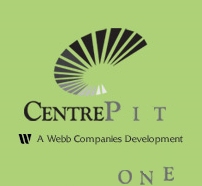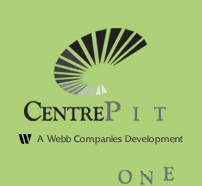[Note: The UnTower Manifesto is a three-part series about responding to the failure of CentrePointe. You can read the full story of that failure here.]
As the CentrePointe project becomes the UnTower scandal, a general consensus has developed which agrees that CentrePointe will never be built on the crater that its developers rushed to create.
A critical question, then, is this: If CentrePointe will not be successfully constructed, how should Lexington move forward in the wake of the UnTower scandal?
There is the obvious question of how to proceed with the colossal scar in the middle of our city. But there is also the less obvious – but, ultimately, more important – issue of changing how Lexington works in order to prevent the next UnTower catastrophe. Let me start there, and we’ll return to the issue of what to do with the site.
Toward a Better Lexington
The details of how UnTower happened have slooowly trickled out from the developers. Their secrecy, lack of candor, intimidation, outright deception, and possible fraud have sharpened questions about how decisions have been made throughout the project’s approval process. UnTower has exposed how opaque and how ill-informed our mayor’s and our Urban County Council’s decision-making processes have been. And, if you look closely enough, the scandal shows us how Lexington should improve.
So, how did this fiasco happen? The details have been covered many times from many, many, many quarters, so I’ll simply summarize the key themes:
- Throughout UnTower, the developers have maintained great secrecy about the financing and the business model behind their development. As details have emerged, neither looks viable.
- The developers claim their project is ‘private’, but have pressured the public to provide approvals and special Tax Increment Financing (TIF) for the project, with much of the TIF dependent upon a vibrant long-term business model which they don’t have.
- The developers, the mayor, and some council members have not shared how and when they learned about key elements of and issues with UnTower which led to its ultimate demise.
- The developers, the mayor, and much of the council have responded to pointed and informed questions about the project with vague, non-responsive answers. Often, they refused to respond at all.
- While there was public discussion about the decisions our government was making, the conversation was muffled by their timing and format.
In the end, the whole affair had a distinct ‘backroom deal’ flavor to it which left more questions than answers: How were these decisions made? What information went into the decisions? What information was withheld? What information was fabricated? Who talked with whom about the project? When did they talk?
All of the questions have raised a bigger question: How is it possible that our community doesn’t have absolute clarity into how decisions are made by our elected representatives?
In my business, if we failed to clearly explain how a vehicle was repaired, we’d lose customers. If we came across as less-than-honest, our loyal customers would fire us. If we refused to meet with a customer to address their complaints, they would tell their friends and family. If we didn’t make things right when we screwed up (and, yes, that does happen occasionally), our reputation would suffer. In the end, our business would fail.
With UnTower, our community’s ‘business’ failed us.
Clarity. Explanation. Honesty. Availability. Accountability. These are the pillars of a transparent business that customers can believe ‘does things right’. A healthy, vibrant business which grows and prospers.
We wouldn’t accept anything less than these qualities from a business. And we shouldn’t accept anything less from Lexington.
In an age of websites, blogs, Twitter, and Facebook, every business has had to engage in conversations with customers on the customers’ terms. The ubiquity of the internet means that these tools are available to nearly everyone, nearly everywhere. The latency of the internet means that the conversations don’t have to happen at the same time – they can build over time. The internet’s ubiquity and latency forms the foundation of a new and better town hall.
Why should we all have to cram into a room at the same time? Why should we have to play ‘beat the clock’ when talking about issues which are complex and nuanced? Why should we have to forgo pressing business or personal matters to attend a meeting which is designed to be convenient for our representatives?
The internet provides the perfect public forum for every citizen to express his or her public policy views, ideas, and thinking. Even better, our ideas can build on one another as we tinker with and improve the ideas of our neighbors. Plus, conducting civic conversations on the internet can happen around the clock. Citizens can participate in the public discussion when and where it is convenient for them, not for the elected representatives who serve them. Isn’t that the way it should be?
Further, every single representative should publish their conversations, thinking, dilemmas, trade-offs, beliefs and positions (and the transactions between them and other interested parties – like developers or investors or campaign contributors). These records should be posted online for all citizens to see, comment on, debate, and improve.
The council members’ emails are listed on the city’s website, as are the mayor’s newsletters. But these are old, closed, one-way forms of communication. They aren’t vibrant community discussions.
So, do I want to see tweets that the mayor’s advisor is picking up eggs? Or a Facebook entry featuring the halloween costumes of the councilwoman’s children? Not particularly. But we deserve to see real-time updates of their thinking on critical community issues. We should know why they have changed their minds at the last minute. They should tell us who they talked with and what they said. After all, they are public officials. We should see into a transparent civic machine which serves all of us.
What is clear is that a 19th-century civic apparatus has hamstrung our 21st-century community. The ancient contraption allows far too many secrets to hide within. Whether our representatives and our governments use blogs, Twitter, Facebook, or some other platform matters far less than whether they start participating in open conversations with the people they serve.
The technology already exists. Millions of people already use it. Thousands of your constituents use it every day. It’s easy. It’s free. And it will make Lexington better. What are you waiting for?
[Continued in: The UnTower Manifesto: 2. Consequences]
[where: E Main St & N Limestone St, Lexington, KY 40507]


